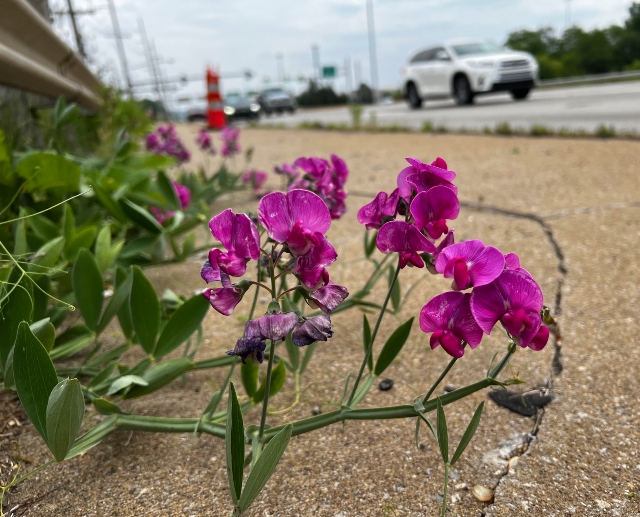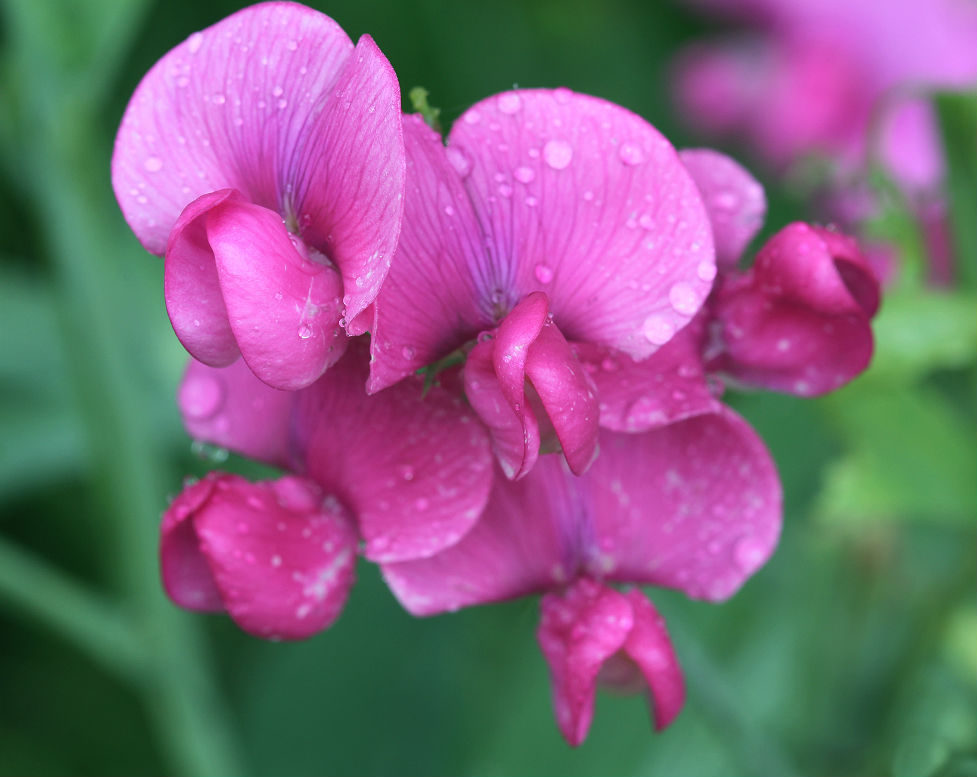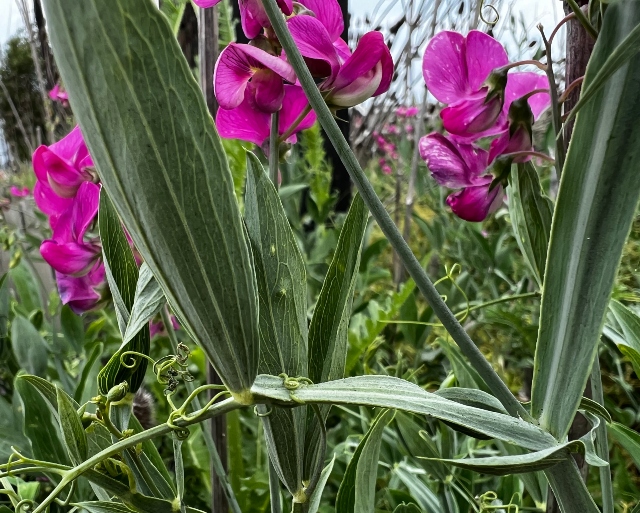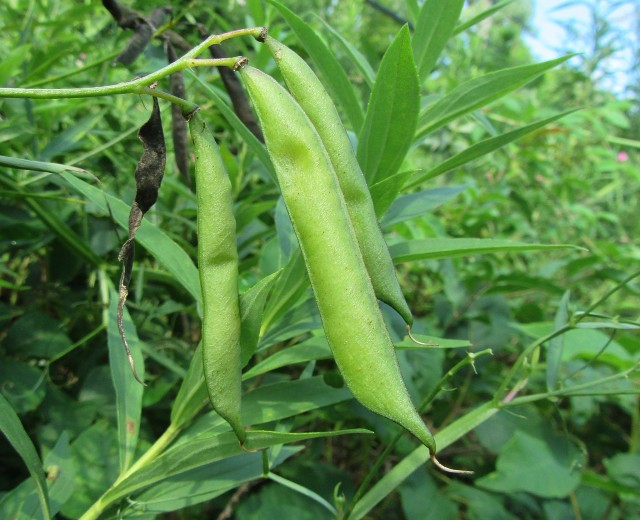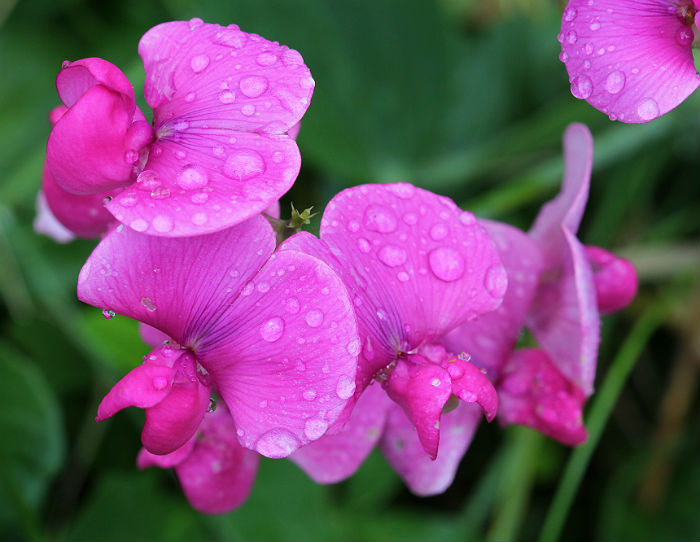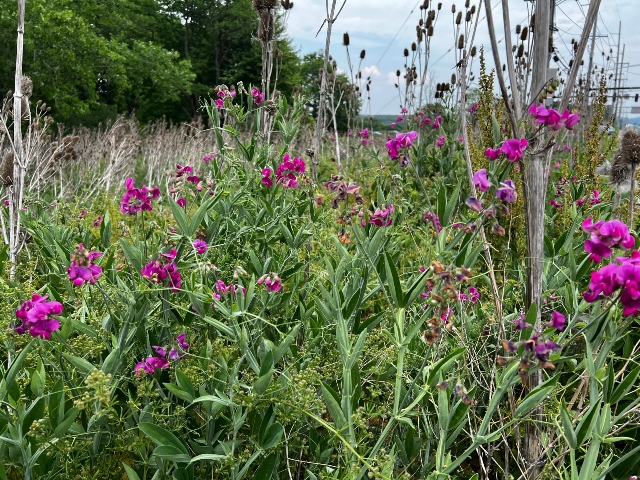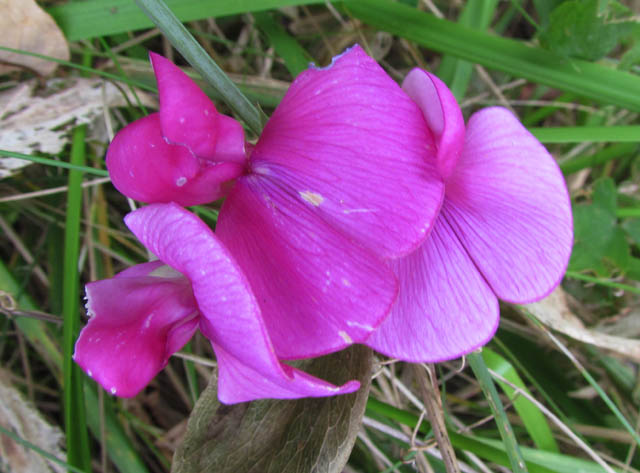I often see this plant on the edges of roadsides in the Summer months. Everlasting Sweet Pea is an old-fashioned, herbaceous perennial climbing vine with beautiful, bright flowers that grows up 10 feet tall.
A non-native, it was introduced from Europe as a horticultural plant because of its showy flowers.
This plant’s habitats include meadows with history of disturbance, woodland edges, sites of old homesteads, vacant lots, fence rows, and gardens. It has distinct stems that look “winged” on each side.
Everlasting Sweet Pea produces pink or white flowers in summer. Its flowers are clustered in groups, about one inch long, in the typical pea-flower configuration, with a large standard (upper petal); rose-purple, rose-pink, or white. Despite their name, the flowers are not fragrant.
Bumblebees pollinate the flowers. Butterflies visit the flowers for their nectar, but do not pollinate them. Fabricius Blister Beetles, the caterpillars of the Oithona Tiger Moth and some herbivores feed on the leaves. However, the seeds of Everlasting Sweet Pea are poisonous.
The flowers are followed by hairless flattened seedpods, about two inches long and half an inch wide, with several seeds inside. The seedpod, which is initially green, gradually turns brown, splitting open into curled segments, flinging out the seeds.
This old heirloom vine was grown by Thomas Jefferson and it also known as Perennial Pea-vine, Everlasting Peavine, and Perennial Sweet Pea.

